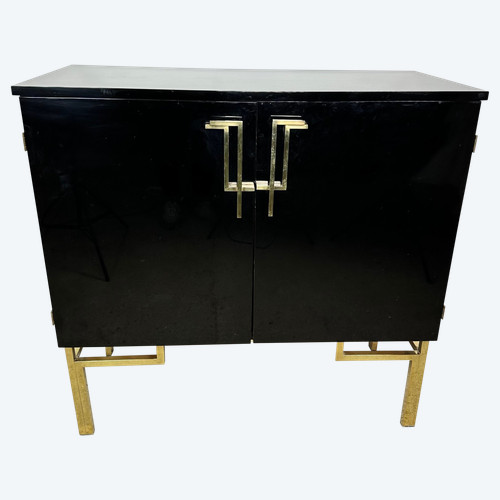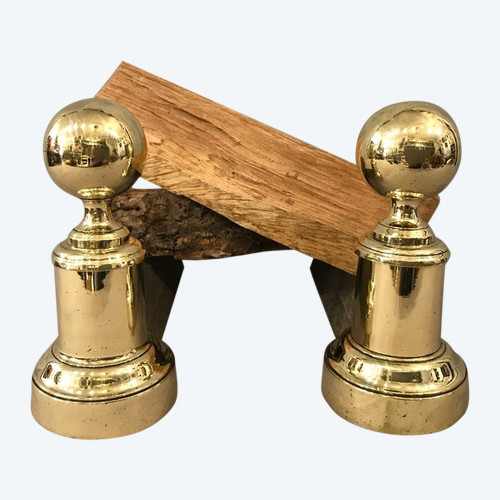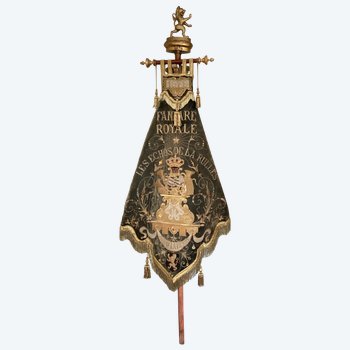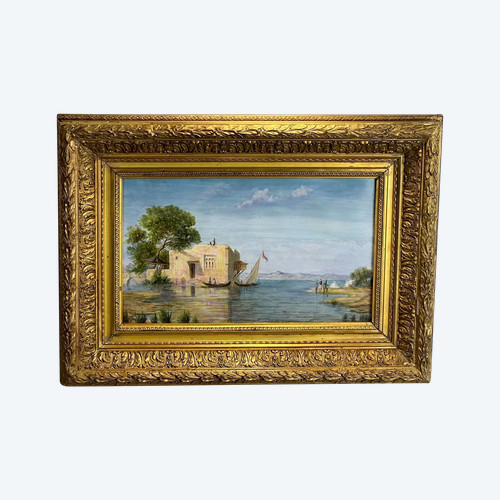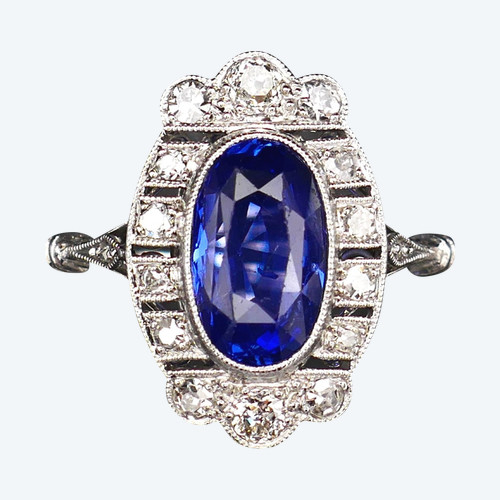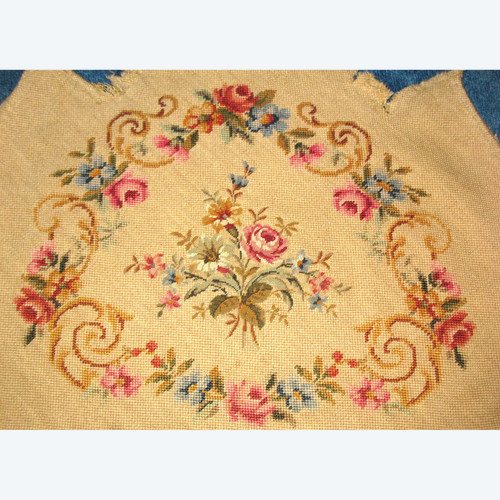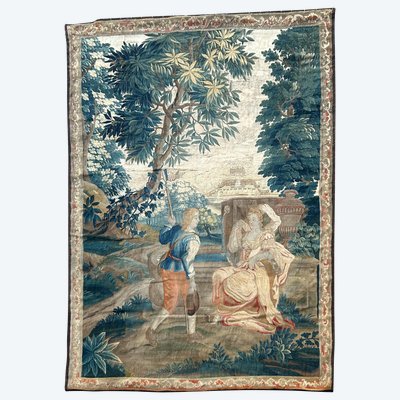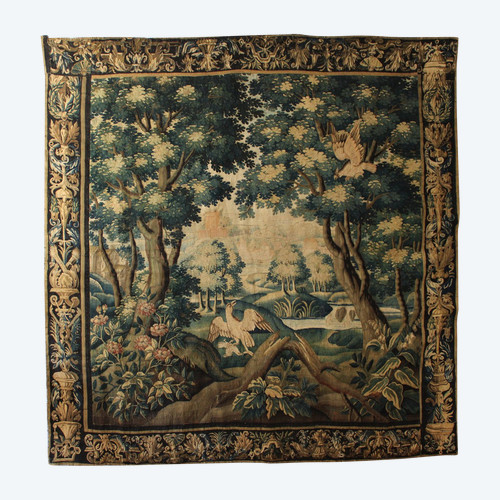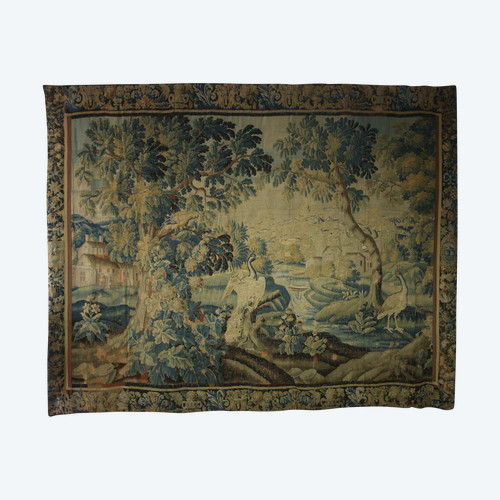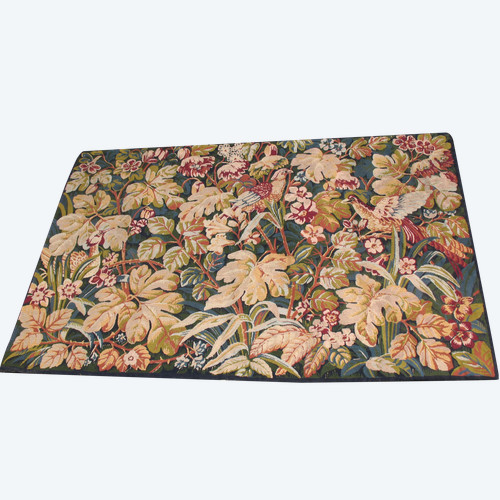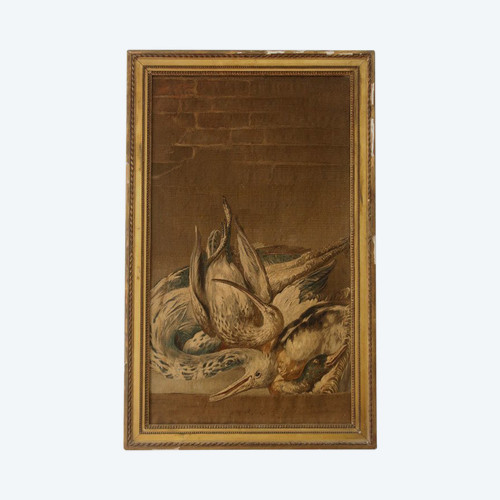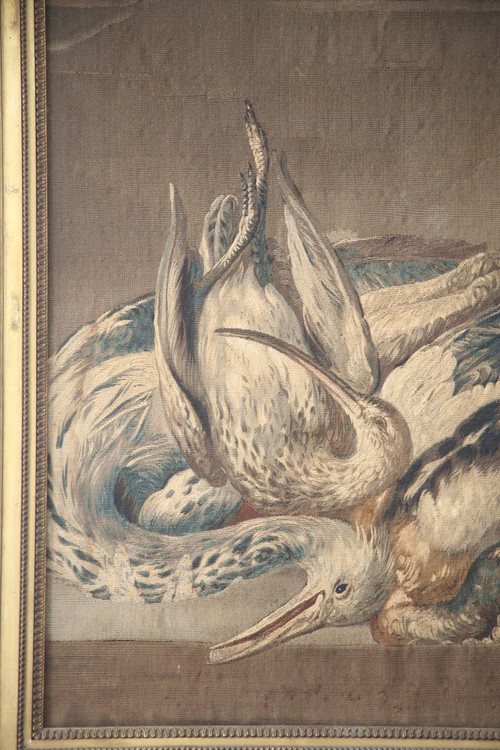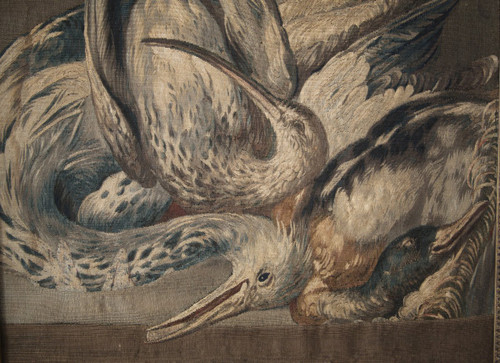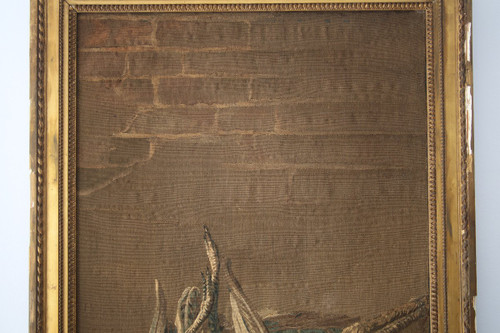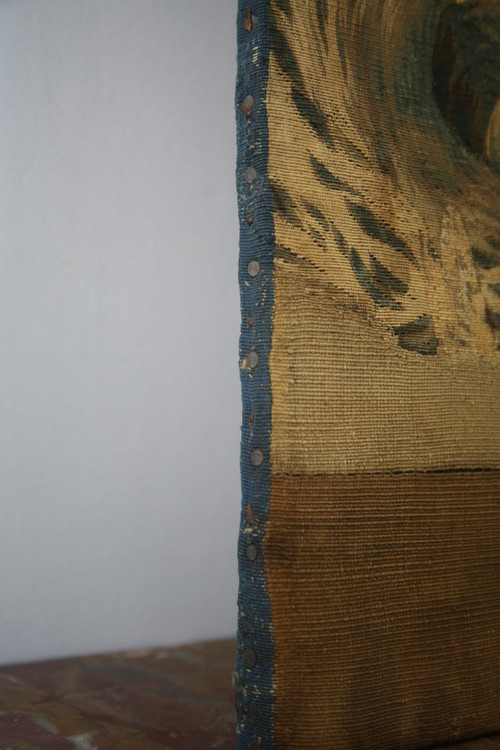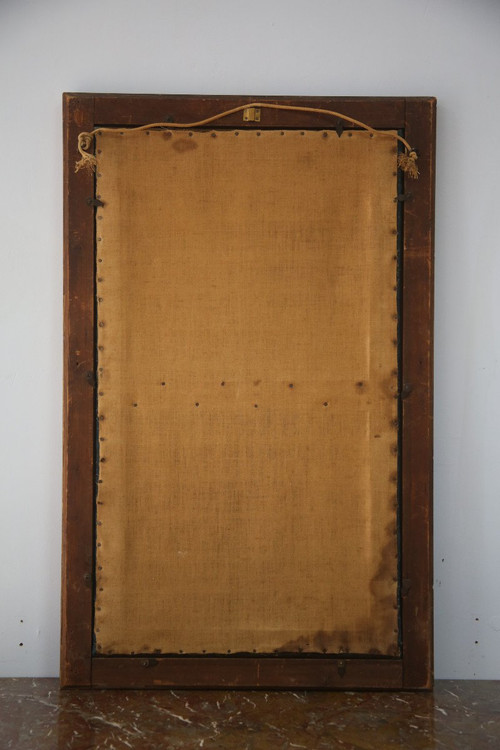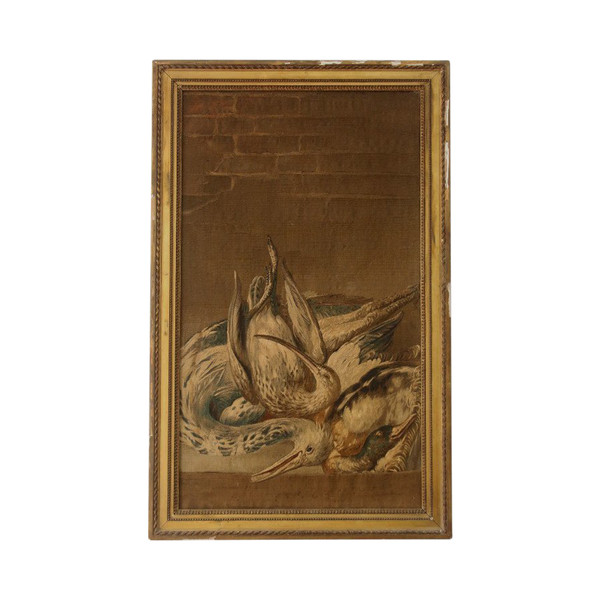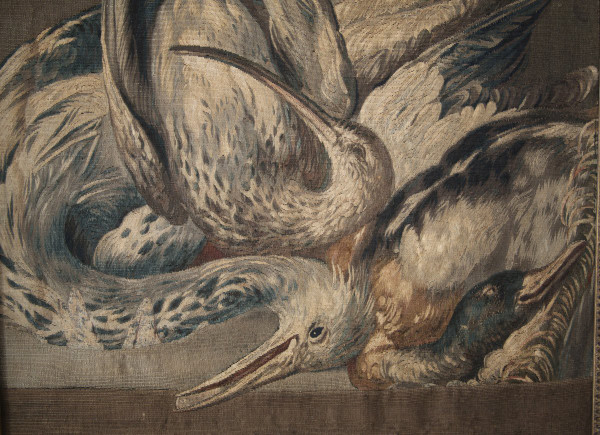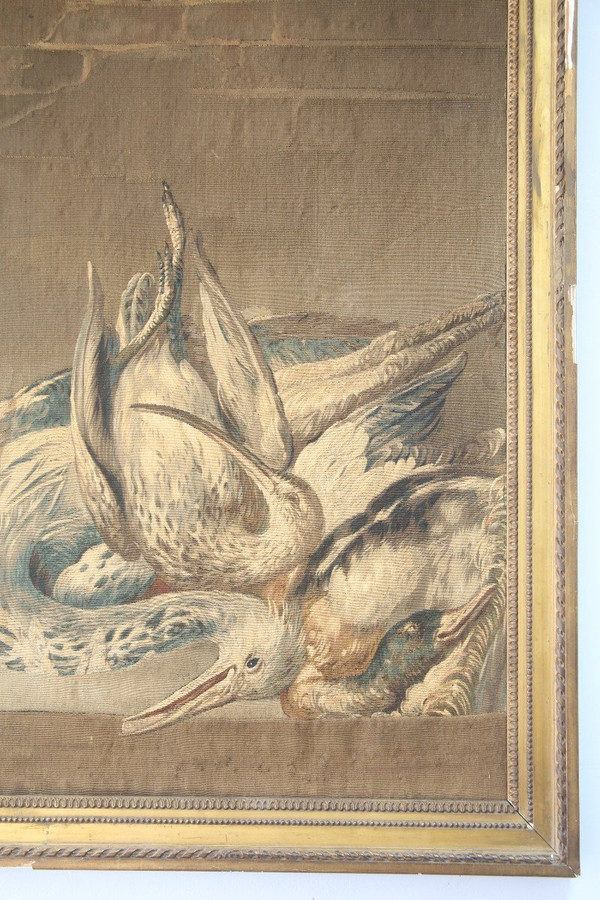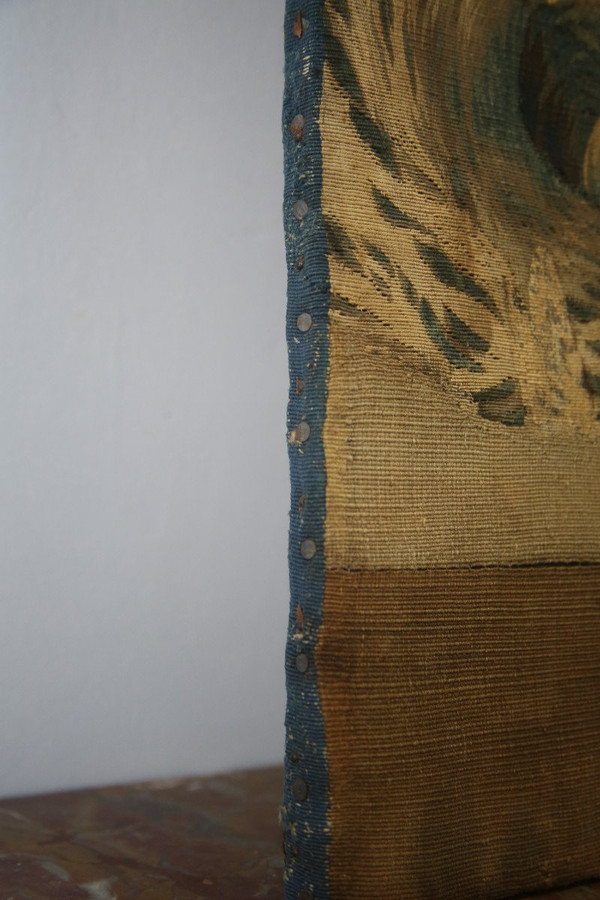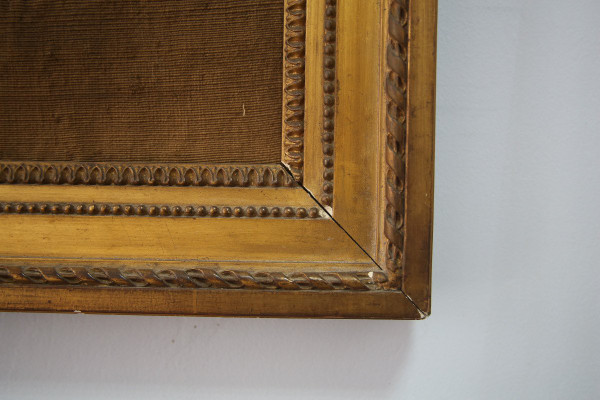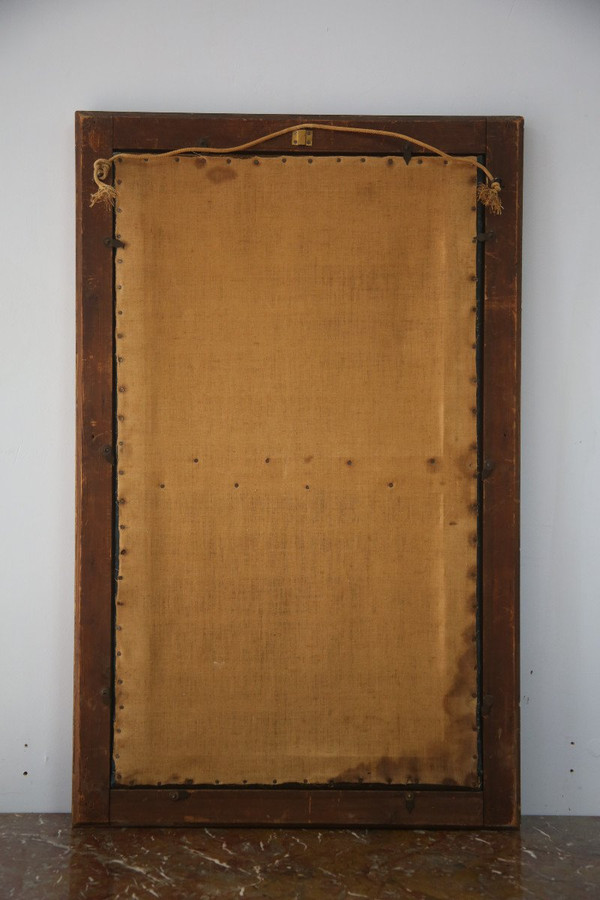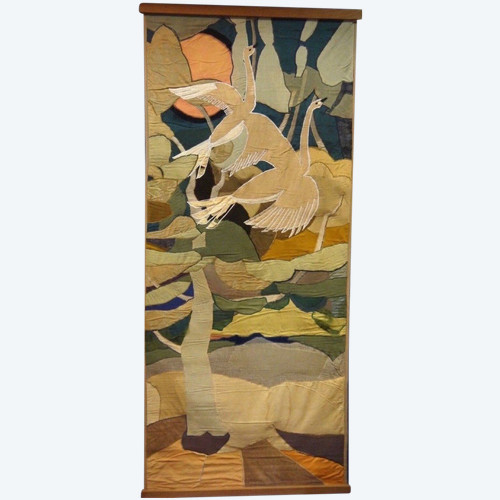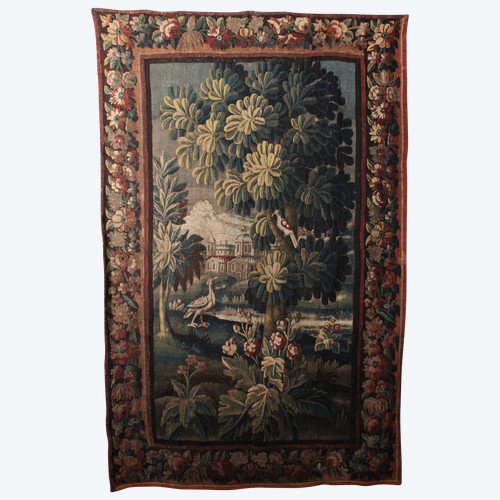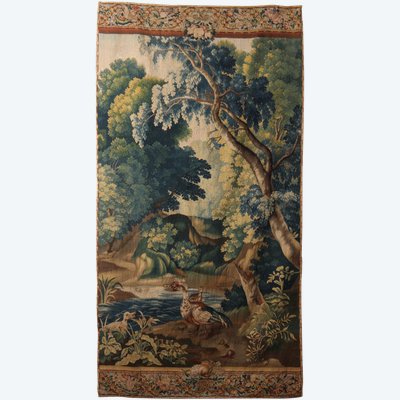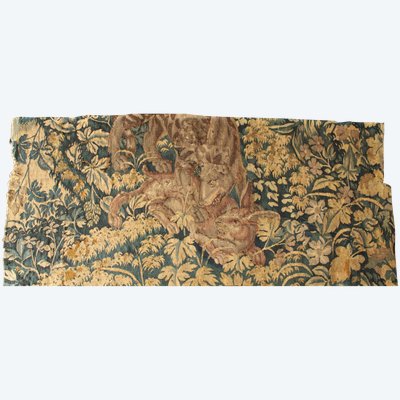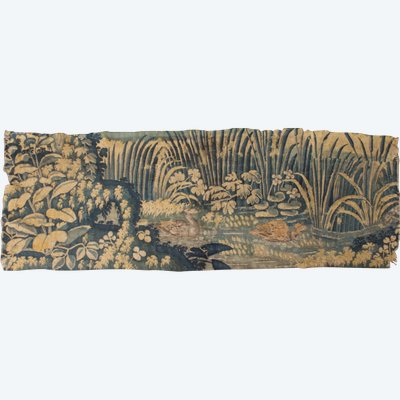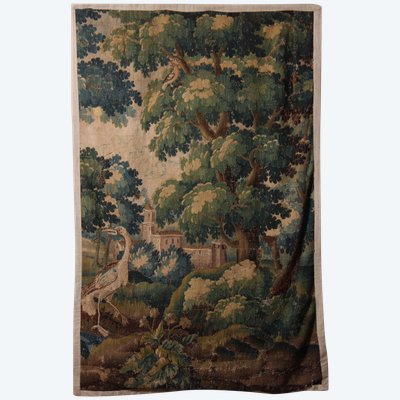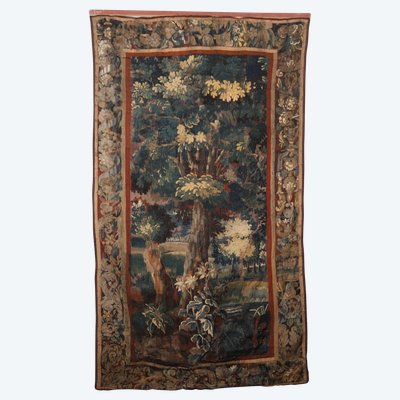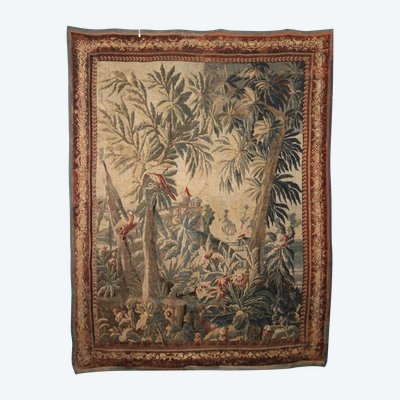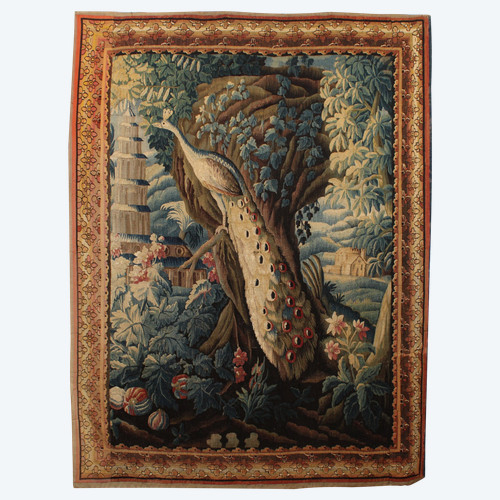This description has been translated and may not be completely accurate. Click here to see the original
Fine tapestry panel depicting a still life with birds like a hunting trophy, mounted on a stretcher in a gilded wood frame.
This weaving, with its rare precision and finesse (10 warp threads/cm), also stands out for the quality of the design that served as a model for the weavers.
This work, which required a painter to create the model and highly skilled workers to translate it with meticulous precision, can be linked to a renowned workshop (Manufacture royale des Gobelins, Manufacture de Beauvais, Flemish workshops).
This is a fragment (the original left-hand "bleu des Gobelins" braid woven at the same time as the piece, the other three having been re-striped) reused as a painting (tapestry lined and stretched in a gilded wooden frame).
Good overall condition. Very satisfactory surface condition (no folds, flat weave, good tension), complete legibility of the design (no gaps), even passage of time on the colors.
Concerning the painting that served as a model for the weavers:
- the drawing of the birds is very precise and delicate, allowing us to feel materials such as the softness of feathers or the hardness of beaks. This analytical description enables us to recognize each species: a heron with its long neck encircling the left side, a northern shoveler on the right and a curlew in the center, with its inert, raised legs standing out in space, dominates the whole.
- Spatial organization is not left to chance; the contorted, inert bodies of the birds offer beautiful compositional curves, while the décor is reduced to shades of brown/gray, with brick architectural elements in the upper part (suggesting a kitchen interior décor). The composition seems to follow the Flemish vein of the still life, while eliminating picturesque details. The light hues of the plumage brighten up the brownish tone of the background, while the emphasis is on the hunting trophy.
- The painted preparatory model is in keeping with 18th-century still-life production, which moved away from rich, Flemish-inspired compositions towards more sobriety. For example, painters like Jean Siméon Chardin, strongly influenced by Desportes and Oudry, gradually devoted their work to humble things, soberly assembling different objects or animals in a simple composition. Their paintings become almost monochrome.
Ref: JRUIPB9F7Y

